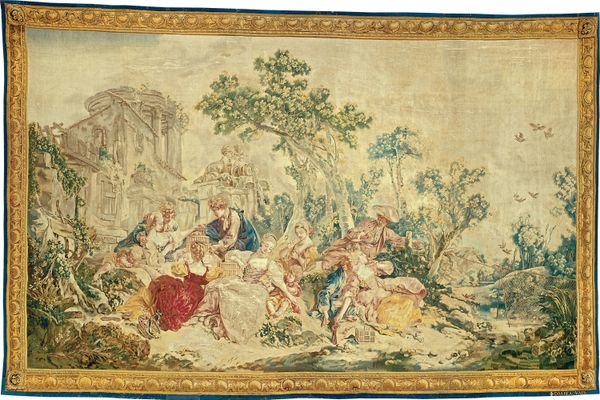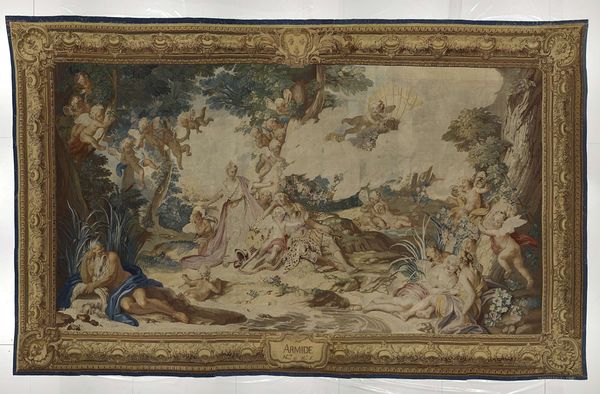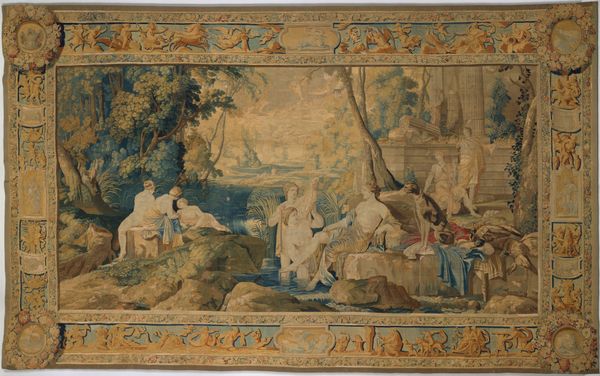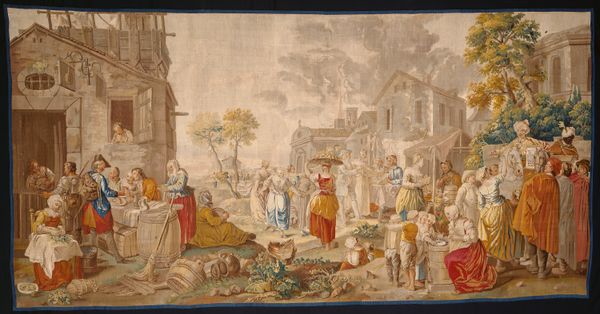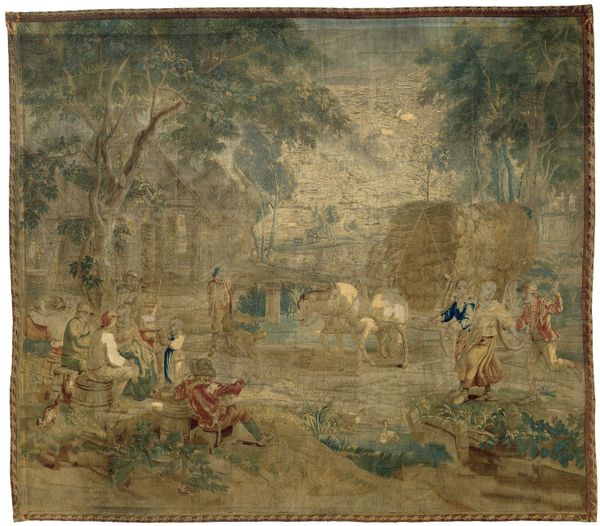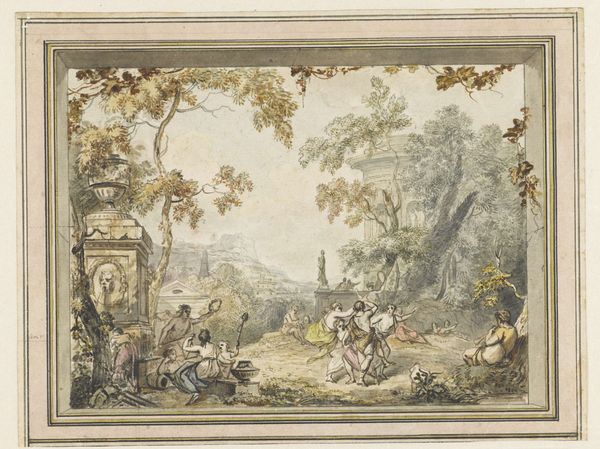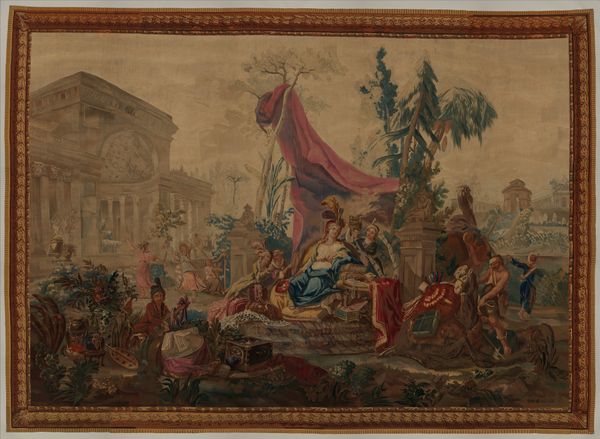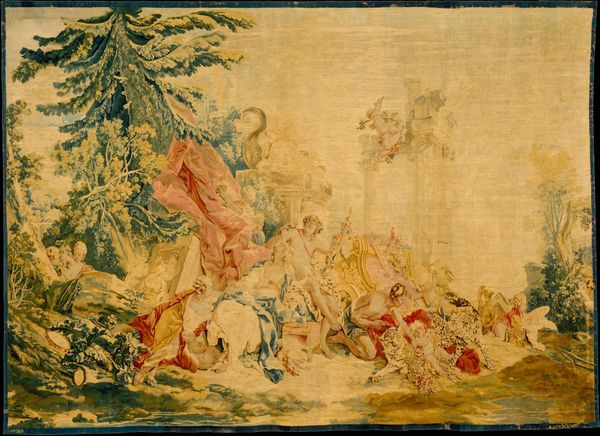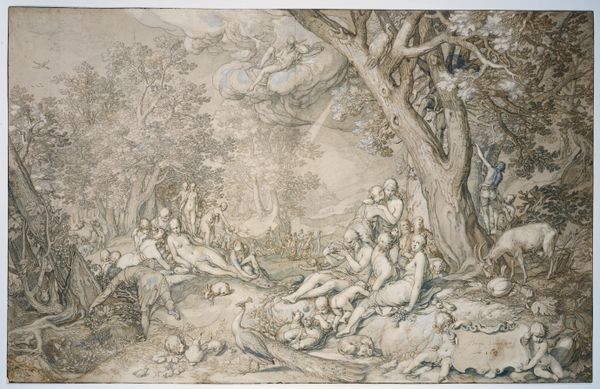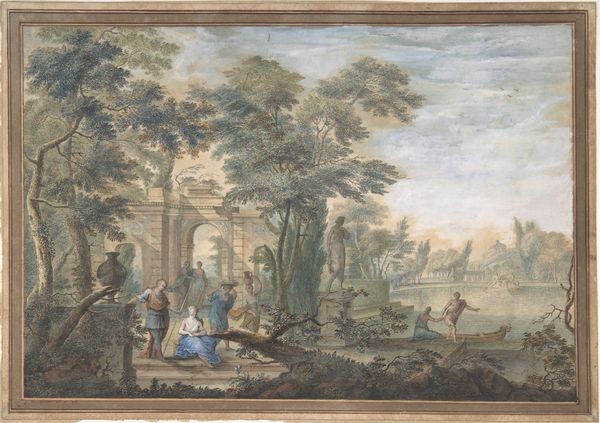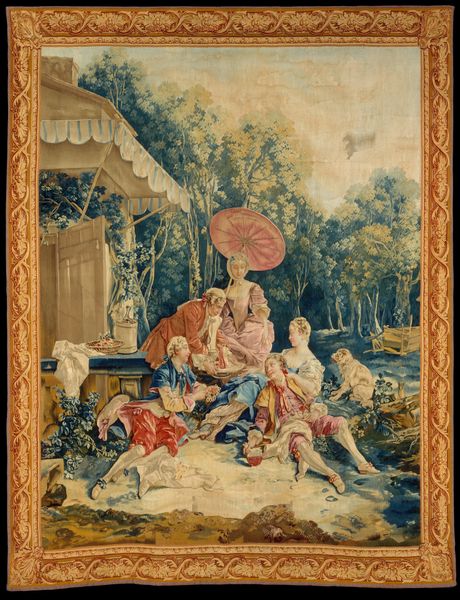
The Repast from the set of Russian Entertainments 1767 - 1772
0:00
0:00
Dimensions: 12 × 20 ft. (365.8 × 609.6 cm)
Copyright: Public Domain
Editor: This is "The Repast from the Set of Russian Entertainments", created sometime between 1767 and 1772. It appears to be mixed media, with oils and watercolors playing a significant role. The overall atmosphere seems quite lavish, portraying a group of people engaged in leisure within an ornate landscape. How do you interpret this work? Curator: Immediately, I see a clear demonstration of power and privilege through this elaborate display of leisure. Considering the context of late 18th-century Russia, such scenes often functioned as carefully constructed propaganda. What appears as mere "entertainment" might obscure the realities of serfdom and immense social inequalities. What details do you think the artist is intentionally highlighting here, and what might be conveniently omitted? Editor: I see the fine clothing, the musicians, and what seems to be a bountiful table of food. These details, presented almost theatrically, point to a life of abundance. The presence of boats further emphasizes a sense of movement and access to resources. Is there any tension or critique embedded in the composition that challenges this superficial read? Curator: Precisely. Tapestries like these weren't simply decorative; they projected an image. I wonder about the "Russian Entertainments" title and what that means for those actually providing this "entertainment." Think about who had access to art and these portrayals of leisurely life. Whose stories are deemed worthy to be immortalized in artistic expressions such as this, and more importantly, whose stories are systemically erased from view? Editor: That's a powerful point. Viewing the artwork as an intentional act of portraying an unbalanced class structure makes a huge difference. Curator: Yes, questioning these lavish displays lets us peel back layers of meaning, recognizing both the overt narrative and the obscured realities that lie beneath. Ultimately, artworks such as "The Repast" ask us to consider how cultural productions participate in social discourse. What lasting impression does that leave you with? Editor: It highlights how crucial it is to view historical artworks with a critical eye, constantly asking who is included, who is excluded, and whose narrative prevails. Thanks!
Comments
No comments
Be the first to comment and join the conversation on the ultimate creative platform.
